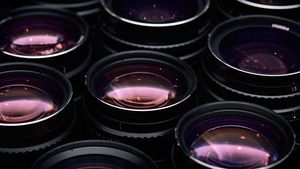Sam Ash has released a new guide comparing analog and digital guitar pedals, exploring which may be a better choice depending on the instrument, playing style, and sound effects.

-- The newest resource helps guitarists understand differences in sound, power needs, and signal chain placement, which vary depending on whether the pedal uses analog or digital effects.
More information is available at https://www.samash.com/spotlight/analog-vs-digital-pedals-what-s-the-difference
The differences in how analog and digital pedals operate lie in their composition, according to Sam Ash’s guide. Analog pedals use transistors and capacitors that process sounds the way they are received, producing a smooth, continuous, and natural signal. This hardware typically results in a sound often described as a natural, warm tone, which makes it a preferred choice for many musicians.
On the other hand, digital pedals convert the guitar's signal into binary data using computer chips and analog-to-digital converters. This information is then processed to produce precise effects, including sounds not achievable with analog circuitry. While this may result in a less natural sound, digital pedals are far more versatile than their analog counterparts, and the sounds they produce can be changed and controlled very precisely.
Sam Ash’s guide says that despite being favored by many musicians, analog pedals have limitations, often sporting more basic designs and fewer features or advanced settings. Sound may also be impacted by signal degradation or external factors like temperature and component age, which will affect consistency. Digital pedals are also not without flaw, and common complaints surround aliasing issues, as well as the latency that these units introduce to sound; however, modern designs have minimized the latter issue, with some models reducing delay to as low as 1.2 ms, a duration imperceptible to the human ear.
Some examples of top-performing analog pedals include the MXR M169 Carbon Copy Delay, Walrus Audio Julia, and Ibanez AD Mini Delay, while notable digital pedals are the Kemper, Boss GT-1000, and Electro-Harmonix #1 Echo. The guide says that ultimately, the best products depend on individual preference, and musicians may determine suitability based on the types of sound effects they want to produce.
Interested parties can learn more by visiting https://www.samash.com/
Contact Info:
Name: Sam Ash Support
Email: Send Email
Organization: Sam Ash
Address: 278 Duffy Ave Unit B, Hicksville, New York 11801, United States
Website: https://www.samash.com/
Source: PressCable
Release ID: 89175791
Should any problems, inaccuracies, or doubts arise from the content contained within this press release, we kindly request that you inform us immediately by contacting error@releasecontact.com (it is important to note that this email is the authorized channel for such matters, sending multiple emails to multiple addresses does not necessarily help expedite your request). Our dedicated team will promptly address your concerns within 8 hours, taking necessary steps to rectify identified issues or assist with the removal process. Providing accurate and dependable information is at the core of our commitment to our readers.






